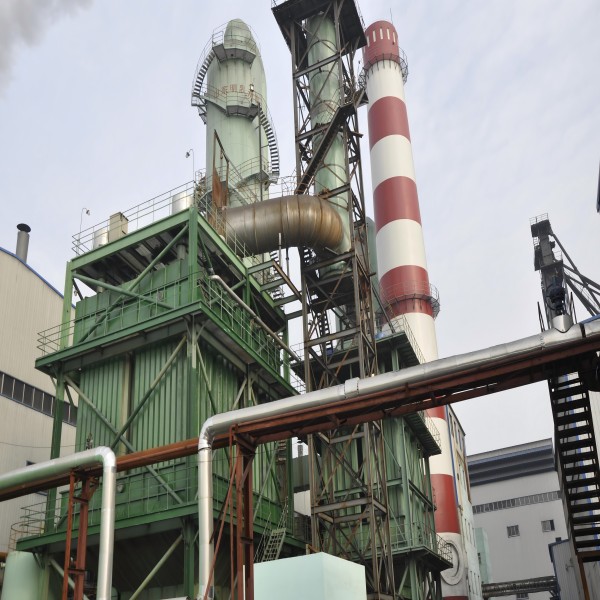Introduction
Flue gas desulfurization (FGD) is one of the key processes in controlling SO2 emissions from power plants and other industrial sources generating significant amounts of SO2. Though it is environmental-friendly, this process yields huge by products such as Flue Gas Desulfurisation gypsum (FGD) etc. The management and utilization of these byproducts face several obstacles in terms of sustainability and economic perspective on a global scale. The rest of this article is about opportunities for managing the peering in FGD and applications of its by-products.
Origin of FGD by-products: composition and types
FGD produces two major by-products, one of which is FGD gypsum or gypsum based material [9], having a chemical composition and properties similar to the ones obtained from nature. The FGD gypsum consists mainly of dihydrate calcium sulfates (or synthetic gypsum) and small amount of species such as organic matter. Fly ash, scrubber sludge and mercury are some of the other byproducts that can contaminate our environment if not managed and treated properly
Environmental Effects of the By-Products from FGD
If these byproducts are not disposed of in the right manner, they will create environmental problems causing soil and water pollution. These by-products can leach out and flow all around if they are stored inappropriately or disposed-of and thus health hazard materials might come-out directly to the environment. Therefore, management and utilization strategies should be implemented as soon as possible in order to reduce these risks when the time comes to use FGD byproducts in soil.
Implementation of sound management of FGD waste byproducts could only be promoted where disposal and storage is strictly banned together with recycling/reuse processes and feasible treatment technology. They can also facilitate safe disposal without endangering the environment, as they have a leak-proof and contaminant-free design. Some by-products could be included in schemes aimed at recycling and reuse which may even more so reduce the amount of material disposed of, and advances in processing technologies are able to transform these materials into value-added products.
Industrial Utilization of FGD Products
FGD co-products, primarily gypsum, can be used in the manufacturing of various industrial products but are also profitable by reducing stress on natural resources. Construction sector The FGD gypsum can be used for plasterboards, wallboards and also concrete. In addition, the compost is also useful in agriculture as a soil amendment that has a positive effect on soil composition and retains water better. Also, the FGD gypsum is applied for high added value products in end products (e.g. high grade gypsum products and green building materials).
Evaluating the Economics of FGD byproduct Beneficiation
The economic feasibility of the FGD residues utilization is closely associated with the cost–benefit ratio between utilization and disposal. Greater use prevents waste from being created in the first place, preserves landfill costs and has economic advantages relative to other disposal options. Market demand for derivates from CBTL or other FGD byproducts influences the commercial success of the use projects. Utilization of FGD byproducts can be made more economically favorable with supportive government policies and incentives for disposal methods.
Environmentally Sustainable Management Process of FGD Waste
Disposal of FGD wastes, and use of the byproducts in an eco-friendly manner, thus ensures that two important objectives – waste generation and reduction in landfill – are met. It also reduces greenhouse gas emissions from production of raw materials, and decomposition of waste in landfills as well. Moreover, sustainable management practices fosters the transition to a circular economy by enabling closed loops in material flows.
Other things that are theoryrelated and helpful
Field use of FGD byproducts has shown successful performance over a wide variety of conditions. By turning to utilization programs, plants and industrial facilities report a smaller environmental footprint on the landscape around them that in cost remains at lower rates. Appropriate quality control has been established, if necessary to ensure the quality of byproducts and an appropriate public information campaign has been initiated when acceptance was perceived as problematic (35).
Future Trends and Innovations
Longer-term trends for FGD waste management indicate improvements in treatment technology as well as new markets for the byproducts. Emerging technologies may increase the efficiencies with which bycountry treatment and recovery can occur while broadening markets will raise demand for these materials. R&D into methods for sustainable utilization will further strengthen innovations to push this sector forward.
Conclusion
It is hot topic on environmental protection and economic development that how to manage and utilize byproducts of flue gas desulfurization. It enables to reduce the environmental stress of the flue gas desulphurization proceses and derive economic margin by recycling and reprocessing of both valuable raw-material components contained in solids and environmentally-friendly product from managements. As new markets and technologies develop, the future of FGD byproduct management is one that will be increasingly innovative and sustainable.
Table of Contents
- Introduction
- Origin of FGD by-products: composition and types
- Environmental Effects of the By-Products from FGD
- Industrial Utilization of FGD Products
- Evaluating the Economics of FGD byproduct Beneficiation
- Environmentally Sustainable Management Process of FGD Waste
- Other things that are theoryrelated and helpful
- Future Trends and Innovations
- Conclusion


